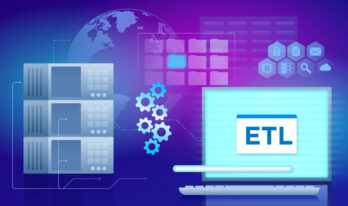A network consists of devices, accounts, groups that are continuously used in day-to-day operations.
Users to perform audits and to rectify any errors need to have such information about these components.
Active directory thus assists users in assigning specific privileges as well as access to the systems.
Let us discuss some of the questions related to active directory groups.
Understanding Active Directory Security Groups and its Best Practices
What Are Active Directory Security Groups?
Active Directory groups are centralized computer programs assisting administrators to grant privileges to users who genuinely are in need of such access.
In other words, it can be described as a central platform through which enterprises are able to manage the accounts of their computers and provide access to the users.
How to create a security group in Active Directory?
Below mentioned steps can guide the users in creating the active directory group for windows 10 and windows server 2016:
- Users need to opt for the active directory users in the computer consoles.
- Hereafter, users need to select the type of container that they will need to store groups created by the user.
- Follow the path after clicking “Action”, “New”, “Groups”.
- Provide a name to the group created and write some description about it.
- Choose the group scope either global or universe depending on the active directory forest infrastructure.
- Select the category of the group as “Security” and then click “ok”.
List of 11 active directory security groups best practices: You should follow
Some of the key active directory best practices are discussed below:
- Protect Default Groups
Groups available for a day to day businesses should be taken care of regularly.
Such groups are created whenever an active directory domain is created.
Users need to make sure that there are no day-to-day accounts in any domain admin group.
Also, users have to make sure that the local administrator account is disabled as it might be repeatedly in use and might be getting configured with the same password on every domain.
- Use Password Protection
Password protection is essential in every sensitive network area.
Users should use more than 12 character passphrases.
After the password has been wrongly updated the third time, that particular user should get locked out.
Also, use of multi-factor authorization should be used for extra protection.
- Maintain Updated Directory
Make sure every software that is available on the system is up to date and has been examined for any vulnerabilities.
For keeping such software safe from any attacks keep checking their patches.
- Check Privileges
Administrators have to keep a track of users’ activity as well as the privileges assigned.
Administrators need to be very cautious while assigning permissions.
Many times users don’t even require full permission and thus such access privileges should be kept at a minimum.
Privileges assigned should be enough so as the users are able to complete their tasks properly without being at risk to networks.
- Use Rotatory Passwords
Admin should always opt for such tools or should develop such practices wherein the passwords are frequently updated.
This will keep the directories safe from attack attempts.
- Use Two Accounts
It will be in the best interest of the organizations as there will be two accounts with certain privileges.
The user accounts should be created and should be made available for every user.
User accounts thus will have privileges assigned accordingly.
On the other hand, an administrator account should be used and made available for admin tasks only.
- Disable Local Administrator Account
The local administrator account can be used by attackers because it is a well-known account.
Even if its name is changed still it is easily identifiable by the attackers.
Secondly, it is often used with the same passwords on every domain.
Thus organizations should disable the local admin accounts as an attack on one such system will compromise the security of every domain-joined computer.
- Minimizing Extras
Use only the tools that are required to perform functions are used.
Admins need to make sure that the accounts are part of the specific groups.
Giving excess permissions to everyone can create excess security threats.
- Use Descriptive Security Names
Rename the groups according to their security functions.
Avoid using simple names like helpdesks or HR or training.
Such names are used in maximum resources and thus can create security issues.
- Have A Recovery Plan
Keep an incident response plan ready.
Cyber-attacks come uninvited, thus users need to be prepared for it in advance.
Train the staff accordingly for such situations.
- Monitor and Audit
Admins need to keep themselves aware of any suspicious activities.
Every logs, active directory, as well as accesses, need to be monitored carefully.
Also regularly take stock of access being provided, any changes made if any.
Conclusion
By setting up better security standards users can stay a step ahead in terms of protecting themselves from any cyber-attacks. Above mentioned steps will assist users in drafting better active directory security.




